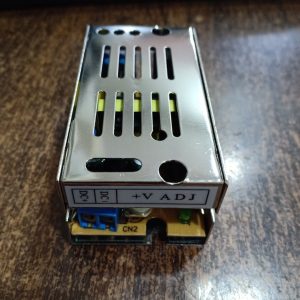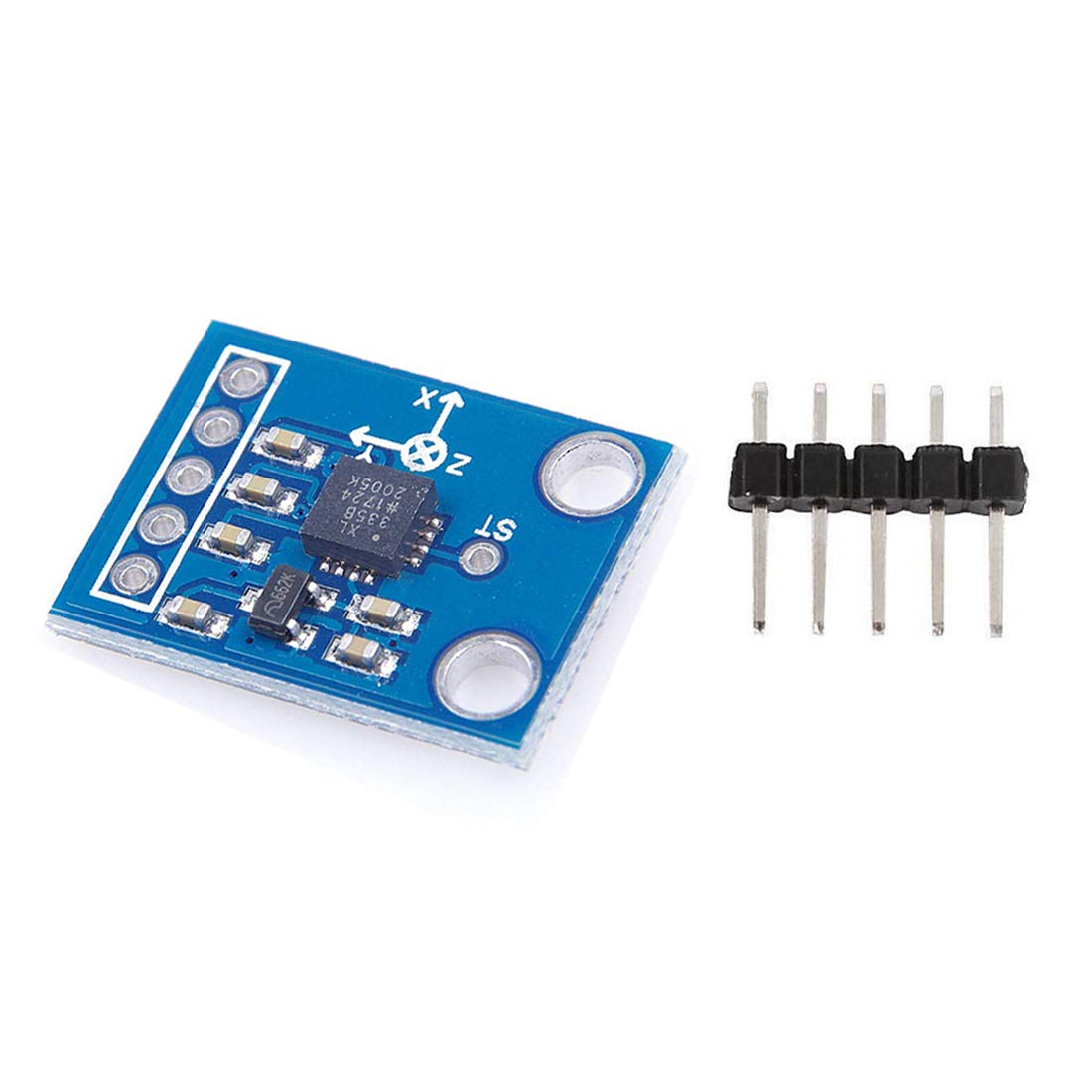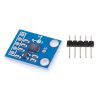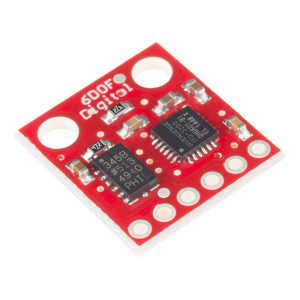Subtotal: EGP275.00
ADXL335 3-axis Accelerometer Module
Out of stock
EGP220.00
Out of stock
At the heart of the module is a small, low-power 3-axis MEMS accelerometer from Analog Devices with extremely low noise – ADXL335. The sensor has a full sensing range of ±3 g. It can measure the static acceleration due to gravity in tilt-sensing applications, as well as dynamic acceleration resulting from motion, shock, or vibration.

The sensor works on power between 1.8V to 3.6VDC (3.3V optimal), and typically consumes just 350µA of current. However, an on-board 3.3V regulator makes it a perfect choice for interfacing with 5V microcontrollers such as the Arduino.
This breadboard friendly board breaks out every pin of the ADXL335 to a 6-pin, 0.1″ pitch header. This includes 3 analog outputs for X, Y and Z axis measurements, 2 supply pins and a self-test pin which allows you to check the functioning of the sensor in the final application.
The analog outputs are Ratiometric, meaning 0g measurement output is nominally equal to half of the 3.3V supply voltage (1.65V), -3g is at 0v and 3g is at 3.3V with full scaling in between.
Here are the complete specifications of ADXL335 Accelerometer IC.
| Operating Voltage | 1.8V – 3.6V |
| Operating Current | 350μA (typical) |
| Sensing Range | ±3g (Full Scale) |
| Temperature Range | −40 to +85°C |
| Sensing axis | 3 axis |
| Sensitivity | 270 to 330mV/g (Ratiometric) |
| Shock Resistance | Up to 10,000g |
| Board Dimension | 20mm x 15mm |
ADXL335 Accelerometer Pinout
Before diving into hookup and example code, let’s first take a look at its Pinout.

VCC pin provides power for the accelerometer which can be connected to 5V on the Arduino.
X-Out pin outputs analog voltage proportional to acceleration exerted on X axis.
Y-Out pin outputs analog voltage proportional to acceleration exerted on Y axis.
Z-Out pin outputs analog voltage proportional to acceleration exerted on Z axis.
GND pin is connected to GND on Arduino
ST(Self-Test) pin controls the self-test feature. This feature is discussed in detail at the end.
Wiring ADXL335 Accelerometer to Arduino UNO
Now that we have a complete understanding of how the ADXL335 accelerometer works, we can begin hooking it up to our Arduino.
Connections are pretty easy. Start by placing the accelerometer on to your breadboard. Connect the VCC pin to the 5V pin on the Arduino and connect the GND pin to the Ground pin on the Arduino. Also connect X, Y and Z output to the analog pins A0, A1, and A2 on Arduino.
For accurate results, we need to change the analog reference(AREF) voltage of the Arduino. This can be done by connecting the 3.3V pin on Arduino to the AREF pin.
When you’re done you should have something that looks similar to the illustration shown below.

 DB9 female socket on PCB to header
DB9 female socket on PCB to header  Input 100~240Vac & Output +12Vdc/ 1.5A/SMPS
Input 100~240Vac & Output +12Vdc/ 1.5A/SMPS 







There are no reviews yet.